| Photojournal
- 28
July 2006
A
miniature
monster
|
On the 28th of July,
a Friday, I again headed out to do some photography after work.
I kept the macro lens on my camera and had the camera on my tripod
with the focussing rail and macro bracket with flash. This time
I decided to venture a little farther from my place, down the
quay to the flowerbeds.
On my way, I encountered
this orange-and-white kitty on a cement block; I've seen him a
few times before. I took a couple of shots of him, which was a
little interesting because I only had my macro lens, and it's
not a zoom lens. I had to move farther away to get the right composition
on the shot, rather than twisting the lens to zoom out.
|
|
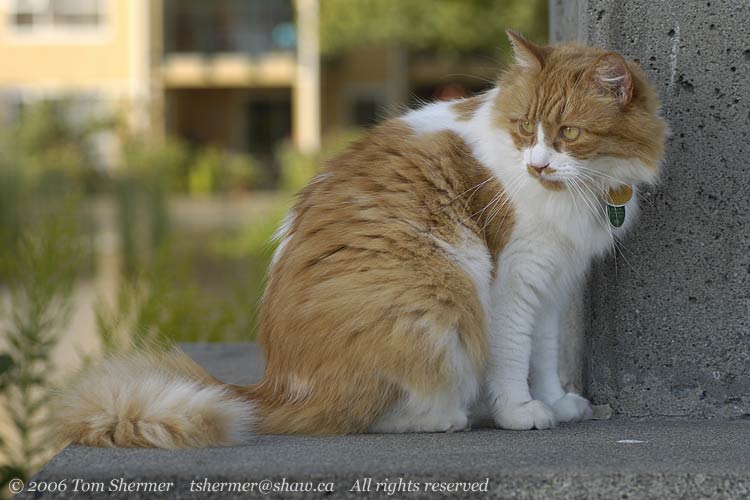 |
| Up close,
the kitty looks pretty serious, but really he's very friendly. |
|
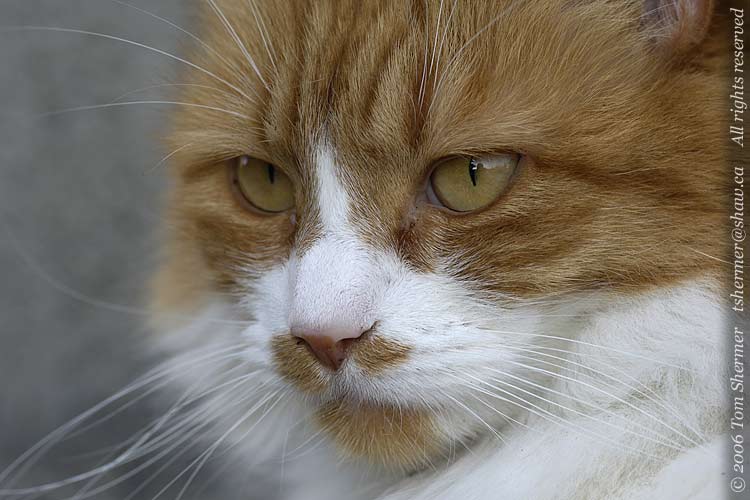 |
|
In fact, when I went
over to take this shot, he climbed up onto my shoulders, and when
I bent over a little so that my head and top of my chest were
resting on the cement block, he laid down on my back and started
purring. I was stuck there for a few minutes before he got up
and walked back onto the block.
It would seem like
those tags he wears (see the first photo) would have his name
on them, but they don't, so I don't know his real name. Now I
just think of him as the "back kitty".
Well, those weren't
real macro shots, but soon I found myself at the flowerbeds, which
were sporting some colorful flowers and nice insects. There were
plenty of opportunities for macro shots here. First up was this
honeybee, with his proboscis extended, on some bright yellow flowers.
|
|
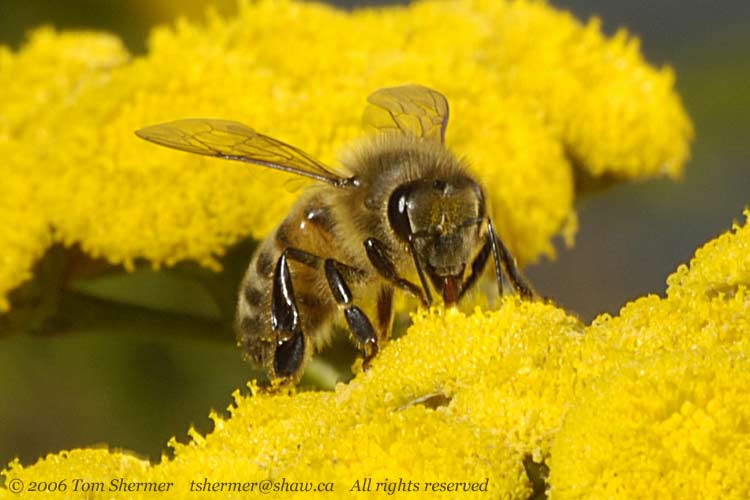 |
|
That shot used both
the flash and the focussing rail.
The following two flower
shots, though, used the flash but weren't close enough in for
me to need to use the rail.
|
|
 |
| |
|
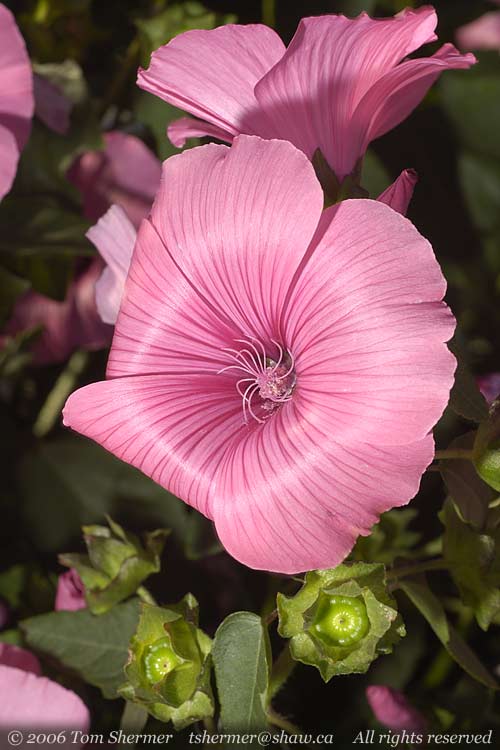 |
| And this
shot used neither...the natural light was strong enough and I liked
the shading it gave, so I didn't add the flash. |
|
 |
| In the flowerbeds,
I noticed a ladybug on a leaf, eating something. This ladybug is
Harmonia axyridis, the Japanese Multicolored Ladybug. |
|
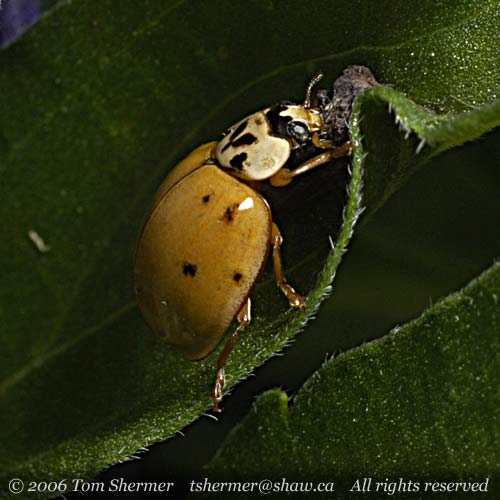 |
|
H. axyridis
is an invasive species and seems to be outcompeting all of the
native ladybugs.
While I was looking
at the ladybug, I noticed another critter further down on the
same plant. This guy was scary and fascinating at the same time...spiky
and segmented, orange and black...he was a miniature monster.
|
|
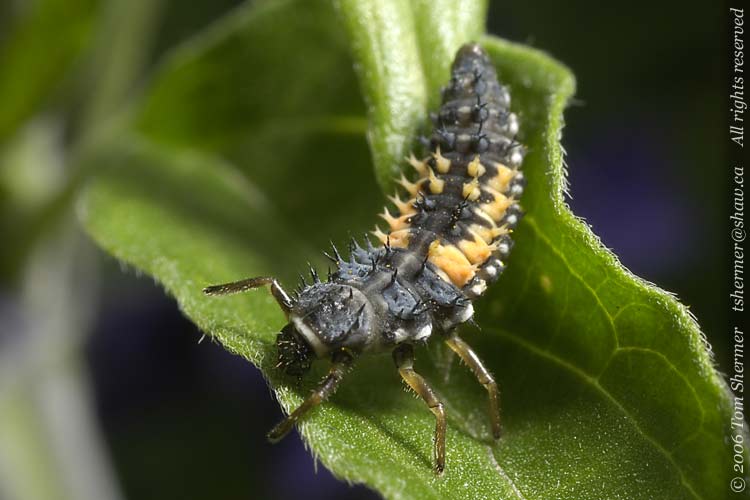 |
|
Now, I've seen caterpillars
with little spiny things coming out of them like that, and this
fellow had six legs, so I figured that he was some insect larva...I
just didn't know which insect. I took several shots of him, using
the rail and flash, as I did in the above photo.
When I had to rotate
the camera on the tripod head to follow the monster, I got distracted
by a ladybug who was heading out towards the end of a flower.
I got set up in time to catch her there.
|
|
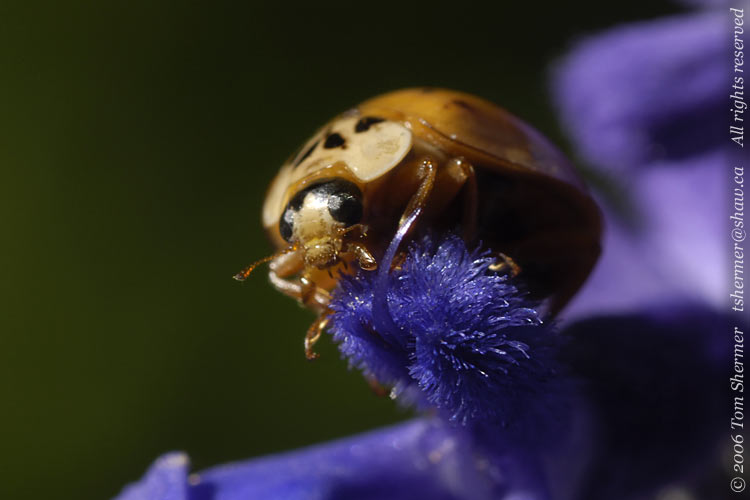 |
|
And a little later,
when I turned my attention back to the larva, I got a shot of
it with the ladybug. I figured that this would be good for estimating
the size of the larva, because I have a pretty good idea of the
size of a ladybug.
|
|
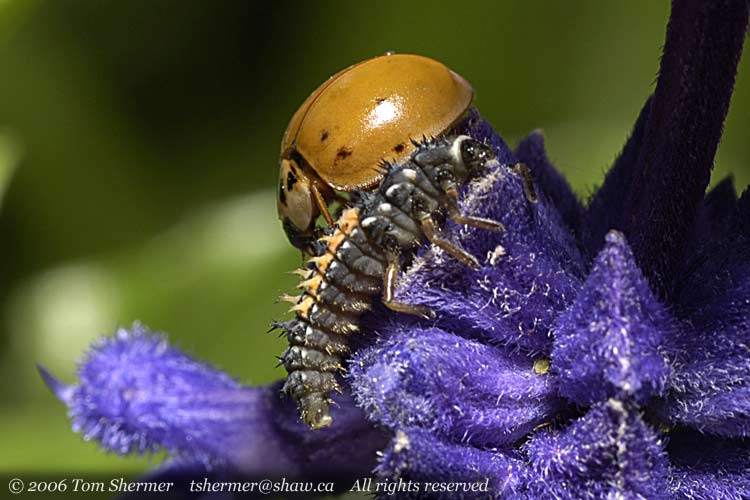 |
|
I asked around, and
it turns out that the above picture is actually a family portrait.
That segmented, spiny, black-and-orange monster is the larva of
the Japanese Multicolored Ladybug. They spend some time as a larva,
fattening up, and then attach themselves to a plant and become
a pupa. When they're done pupating, they emerge as the ladybugs
we all know so well. Fascinating stuff, how one of those critters
becomes the other.
The only other subject
I got good shots of that day was the white flower below.
|
|
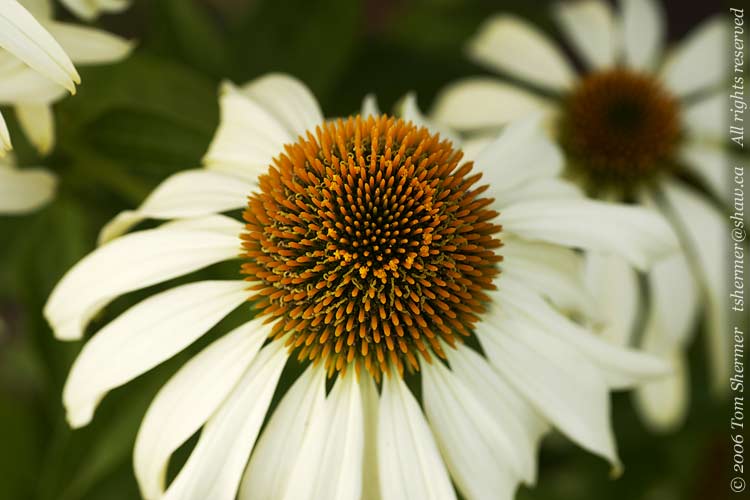 |
|
My friend Karla told
me that it's a White Coneflower, and looking that up got me its
latin name...Echinacea purpurea (White Swan.variant). Normal
E. purpurea are purple.
And yes, that's the
same Echinacea that people take to ward off colds and flu...or
one of the Echinaceas that people take for that purpose.
Going where the monsters
go,
Tom
|
|
|